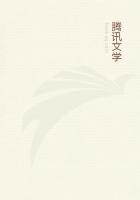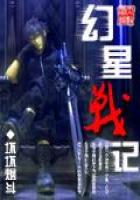[62]--It will be seen hereafter that the kingdom was divided into provinces,held by nobles an condition of maintaining large armies ready for service at any moment.
[63]--Some authorities say that Daud was Mujahid's cousin.
[64]--"Dhunna Sodra"is,I think,a lake or tank in the plain on the eastern edge of the Vijayanagar hills,close under a lofty hill called,in the Trigonometrical Survey Taluq map,"Dannsundram,"for (probably)Dharma Samudram.On the summit of this hill is a great Trigonometrical Survey pillar.The hill is 500feet high,and lies within the limits of the village of Kanvi Timmapuram.Commanding,as it does,the route by which a force issuing from the capital would attempt,by rounding the hills,to cut off the only line of retreat open to the invaders towards the north east,the importance of the post to the Muhammadan army could not be over estimated.
[65]--Senhor Lopes tells me that he recently found in the archives of the Torre do Tombo in Lisbon (CORPO CHRONOLOGICO,Part iii.packet 11,No.107)a copy of a copper-plate grant which was executed by the chief of Goa in A.D.1391in the name of "Virahariar,"king of Vijayanagar,the suzerain.This was "Vira"Harihara II.It was copied in A.D.1532,and translated into Portuguese.
[66]--Probably Belgaum.
[67]--The Tulu-ghat,or the Tulu country on the Malabar coast.
[68]--Compare the passage in the Chronicle of Nuniz,p.302below,where,writing of a period a few years later,he says,"The king of Coullao (Quilon)and Ceylon,and Paleacate (Pulicat),and Pegu and Tanacary (Tenasserim),and many other lands,pay tribute to him"--the Raya.
[69]--17th Zil-hijja,A.H.779.
[70]--Meadows Taylor,in his "History of India,"relates (p.163)that on one occasion Mujahid,during his attack on Vijayanagar,penetrated into the second line of works,where there was a celebrated image of the monkey-god,Hanuman.The Sultan dispersed the Brahmans who tried to protect it,and struck the image in the face,mutilating its features."A dying Brahman lying at the foot of the image cursed the king.'For this act,'he said,'thou wilt die ere thou reachest thy kingdom.'A prophecy which was literally fulfilled.The image,hewn out of a large boulder of granite,still remains,and shows the marks of the king's mutilation."I do not know to which image the historian alludes.There are several statues of Hanuman in the second line of works,two of them lying south of the temple of Malaanta Raghunathasvami.
[71]--21st Muharram A.H.780.
[72]--The name is generally given as Mahmud,and so Firishtah names him but Dr.Codrington (NUMISMATIC CHRONICLE,3rd Series,vol.xviii p.261)points out that the name on all the coins of this Sultan is "Muhammad,"and not "Mahmud;"and this is confirmed by the BURHAN-IMAASIR and two other authorities (Major King in IND.ANT.,July 1899,p.183,note 39).I think it best,however,to adhere to Firishtah's nomenclature to prevent confusion.
[73]--21st Rajab A.H.799.The 26th according to the BURHAN-I MAAZIR.
[74]--See Rice's "Mysore Inscriptions,"p.55(A.D.1379);JOURNALBOMBAY BRANCH ROYAL ASIATIC SOCIETY,xii.340(A.D.1399).
[75]--See above,p.28.Professor Aufrecht believes that Sayana died A.D.1387.
[76]--"Mysore Inscriptions,"p.226.
[77]--JOURNAL BOMBAY BRANCH ROYAL ASIATIC SOCIETY,ix.227.
[78]--In this the king is called "MAHAMANDALESVARA,son of Vira Bukka Udaiyar,Lord of the four seas."[79]--EPIG.IND.,iii.pp.115--116.
[80]--OP.CIT.,p.119.
[81]--17th Ramazan A.H.799(Firishtah).
[82]--23rd Safar A.H.800(Firishtah).
[83]--EPIGRAPHIA INDICA,iii.36,N.3.
[84]--Firishtah (Scott,p.76).
[85]--Rather,I think,basket-boats.These are described in the text of Paes (below,p.259)as being in use on these rivers in the sixteenth century,just as they are to-day.They are circular in shape,and are made of wickerwork of split bamboo covered all over outside with leather.Colonel Briggs,writing of these boats (Firishtah,ii.371),in a footnote says,"A detachment of the British army crossed its heavy guns without even dismounting them over the Toongbudra in 1812in these basket-boats."[86]--These women always accompanied the Raya's armies.Nuniz says that large numbers of them were at the Hindu camp at Raichur in 1520.
[87]--A stringed instrument.
[88]--Youths trained to sing and dance in public.
[89]--Assessed at "near [pound sterling]400,000"(Scott,Firishtah,p.79,note).
[90]--"Mysore Inscriptions,"Rice,p.279,No.150.Professor Kielhorn in IND.ANT.,xxiv.p.204,No.304,and note.
[91]--"South Indian Inscriptions,"i.82(Dr.Hultzsch).
[92]--We must remember that the narrator is a loyal Muhammadan.Mudkal was in the tract always in dispute between the two kingdoms.
[93]--About forty miles north.
[94]--Briggs gives her name as "Nehal."[95]--Briggs says,"In the beginning of the year 809."This would be the month of June,and the months following would have been unfavourable for the march of armies.I prefer Scott's rendering.
[96]--Firishtah generally calls this place "Beekapore"(Scott,i.47,69,85,86&c.),but on p.301he spells the name "Binkapore."Bankapur was one of the principal fortresses in the Carnatic.It is the "Bengapor"or "Vengapor"of our chronicles.(See below,p.122.)[97]--This again points to the Muhammadan camp having been in the neighbourhood of Hospett,south of Vijayanagar.
[98]--"Plates of gold filled with incense and silver flowers."--Briggs (ii.386).
[99]--This square is the open space mentioned by both Nuniz and Paes.On the left of it,as the cortege advanced,was the palace.
[100]--Scott has it "Mankul"(i.90),but Briggs (ii.389)corrects this into "Pangul,"which is undoubtedly correct.















